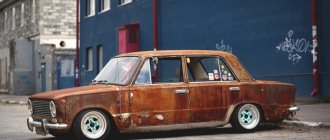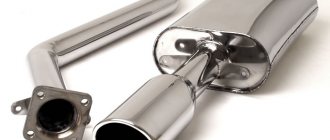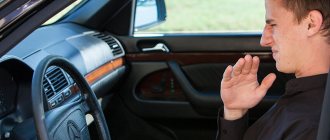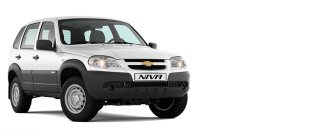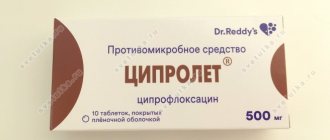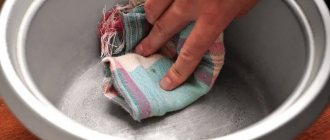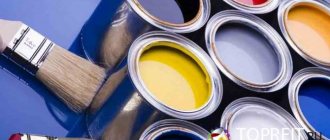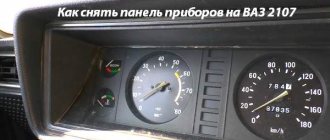In this article we will figure out how to remove rust from a car. Let's look at rust removal methods, chemical and mechanical means.
To better understand what you have to deal with, let's first understand the theory of rust and its types.
Content:
- Why does rust occur?
- Types of car body rust
- How to remove rust from a body?
- Rust converter
- Sealing rust
- Removing rust with potent agents
- Mechanical rust removal
- Replacing rusty metal with new one
- Fiberglass rust through repair
Why does rust occur?
When iron or steel is not protected, a process of reaction with oxygen occurs and corrosion of the metal occurs. The metal breaks down and forms rust, a red-brown compound that is an obvious sign of electrochemical oxidation of the metal. Other metals also oxidize, but they do it differently. So, for example, corrosion of aluminum spreads much more slowly.
Corrosion deteriorates the properties of the metal, its structure and thickness, leading to a loss of strength. Corrosion can be concentrated in individual points, or it can spread over a large area more or less evenly.
The rate at which metal rusts is quite slow, but it is accelerated by contact with water, especially if the water has a high concentration of salt, which acts as an electrolyte (a substance that helps electrons move). Also, the rate at which rust spreads is affected by the ambient temperature. The higher the temperature, the faster the metal rusts.
Why does metal rust? With the exception of gold, platinum and a few others, metals do not occur in nature in pure form. They are chemically combined with other elements in the ore, such as sulfides and oxides. To extract metals from sulfides and oxides, energy must be expended (in a blast furnace) to obtain pure metal. Since all elements in the universe tend to return to their lower energy, ground state, pure metals also tend to return to their ground state in which they were in nature (in the form of sulfides and oxides). The path that returns a metal to its ground state is its oxidation. Thus, corrosion is a natural process that transforms a metal into its chemically more stable form.
Rust does not spread through contact like a biological infection. Instead, the process of iron oxidation occurs independently, depending on environmental conditions.
Different metal alloys rust at different rates, depending on their composition. Impurities in metal alloys accelerate the corrosion process. Pure iron does not oxidize as aggressively. Unfortunately, pure iron is not a very good material for making car bodies. By adding carbon, the result is steel that already has all the necessary properties for sheet metal forming, such as elasticity and tensile strength.
It would be more honest to call the fight against rust a delay from its occurrence. You can't win it completely. Cars from the factory have weak points that “wait” for favorable conditions for corrosion to occur. A vehicle that appears rust-free may contain rust in hidden cavities or on the back of some panels.
Corrosion can occur on a car body in the following cases:
- Due to the appearance of a deep scratch or chip of the paintwork.
- Rust occurs in areas of the body where dirt and salt accumulate. These are areas around the fenders, at the bottom of the doors, due to blocked drainage holes.
- Spot welded areas are also prone to rust.
- Rust usually starts at the edges of the panels. These parts have a thinner layer of paint that wears off faster.
- Thresholds and other hidden cavities can rust from the inside.
- Rust may appear in places where body repairs were carried out and anti-corrosion treatment was not carried out correctly.
Why does rust appear on the car body and sills?
Automobile manufacturers protect the car as much as possible from corrosion processes. For this purpose, steels that are resistant to humidity and oxides are used, galvanized, and strong and durable paint and varnish coatings are applied. But these measures do not guarantee ideal protection against rust: sooner or later, rye stains appear on the outer surfaces of the body, and even earlier - on the bottom, inside the wheel arches and on the sills.
To effectively combat processes that destroy metal, it is necessary to understand the nature, nature and degree of complexity of rust. Body specialists divide corrosion damage into several degrees:
- Early – the appearance of rye on external surfaces and under paintwork without damaging the metal structure. It can be easily eliminated by simply stripping the coatings, applying anticorrosive paint and new paintwork.
- Medium – penetration of corrosion onto internal surfaces with slight damage to the metal (sometimes through). This requires serious cleaning and treatment of corrosion areas, or partial replacement of body elements.
- Deep is a deep (up to 60%) damage to the structure of parts (“rotten metal”) with a violation of the physical and technical characteristics of the metal. Usually it cannot be “treated”: a complete replacement with cutting and welding is necessary.
The source of the corrosion process also matters. The appearance and growth of rust can be influenced by electromechanical (microcracks, chips, injuries, damage to paintwork) or chemical (air, water, temperature changes, aggressive environments, chemicals) reasons. To stop corrosion, it is necessary to eliminate the cause that causes it, which determines the method of eliminating rye.
Traditionally, in Russia, the rapid appearance of rust even on new cars is explained, first of all, by the quality of the body metal and paintwork of the body (meaning factory quality). But even if the metal and paintwork on the body are impeccable, there are always natural factors - a difficult climate with strong temperature changes and large amounts of precipitation, as well as the “human factor”: poor road conditions, aggressive anti-icing reagents on highways in winter, poor-quality repairs and untimely Maintenance.
Considering that our cars begin to rust after the first 7 years of operation (and in difficult climatic regions - even faster), anti-corrosion car care must be regular, high-quality and professional. This is the only way you have the opportunity to delay the appearance of corrosion on the car body or stop the rusting of the metal in time.
Types of car body rust
In general, there are two main types of rust. The first is surface rust. It originates and spreads from the outside of body panels and occurs due to paint deterioration, wear, or chips and deep scratches. Depending on weather conditions (humidity, temperature and the use of road salts), this type of metal corrosion can progress slowly and can be easily cleaned.
The second type of rust starts from the inside and spreads unnoticed. This type of corrosion is much worse and more dangerous. If you see signs of rust under intact paint, it is most likely rust that originated on the back of the panel and has spread throughout the thickness of the metal. This type of rust often occurs in cities where roads are salted in winter.
Also, the process of metal corrosion can be divided into different stages.
- The first stage is characterized by oxidation, which does not damage the metal and is easy to clean.
- If you do not have time to eliminate light surface rust, then the rust goes into the second stage. In this case, the rust “eats in”, the metal may have small depressions with rust inside, but the metal panel still has good strength.
- At the third stage, in addition to the “ingrained” rust, peeling rust and through holes appear. The metal begins to lose strength.
Rust molecules are physically larger than iron or steel molecules. Rust increases in volume and becomes 10 times larger than the metal from which it is formed. Thus, rust breaks through the paintwork and exposes the metal, after which it spreads even faster. In addition, a rusty surface absorbs and retains water, which also leads to its spread. Therefore, removing rust is very important. The question arises, how to remove rust from a car? What methods exist and which ones are the most effective?
How to remove rust from a car?
The most important principle when removing rust is to identify it as quickly as possible and take corrective action. The longer rust goes unattended, the more difficult and expensive it will be to remove.
First, you need to determine what corrosion is on a specific body panel. It starts under the paint and may not be immediately visible. Oxidation under the paintwork may appear as paint bubbling or peeling. You need to understand how much the rust has spread. To do this, you need to clean off the paint in places with corrosion, leaving enough space to reach bare metal.
There are several ways to get rid of metal corrosion:
- Convert rust
- Stop and seal rust
- Use a product with a strong acid (rust remover)
- Mechanically process (may precede the three previous methods)
- Remove and replace rusty metal with new metal.
- Alternative fiberglass repair method
Corrosion Removal Options
There are several ways to eliminate spontaneous destruction of metal:
- mechanical - when rust is removed by stripping down to metal, primed, puttied and subsequently painted.
- chemical - through the use of special products available on the market in a huge assortment.
To eliminate deep stains of large volume, the first option is best suited. The low price and availability of the necessary materials are another plus in favor of the chemical method. Of the shortcomings, only one was noted - the duration of the process.
The second method is suitable for removing rust in hard-to-reach places. The speed of the process is also pleasing; it is much faster than the first. Regardless of the method, before starting work, we inspect the body to identify problem areas and decide on the scope of work.
Rust converter
Rust converter is an aqueous solution with an acid (usually phosphoric or tannic). In addition to the acid, an organic polymer (butyl glycol) and wetting agents may be present, which reduce surface tension and increase the penetration ability of the acid into rust. Some converters may contain additional acids to speed up the chemical reaction, as well as other components. Products from different manufacturers may have different compositions.
Phosphoric acid dissolves rust and then converts it into iron phosphate. Iron phosphate forms a thin protective layer to minimize further oxidation. It is designed to be applied directly onto rust.
When should you use a rust converter?
- On a medium rusty surface. Areas that are completely covered with a substantial, non-loose layer of rust. It is necessary that there is no mixed surface (pure metal + rust + old paint).
- The converter works well on a surface where corrosion has begun to penetrate into the metal (but not deep) and covers the entire metal. Loose, flaking rust must be removed before applying the converter. After the action of the converter, the rust acquires a purplish-black color.
- Can be used to transform (neutralize) cleaned corrosion residues. If rust residues are located in several places, between clean metal, then in this case a common protective layer is not formed.
Lack of rust converters
In theory, converters are an excellent solution to the problem of rusty metal, but in practice, not everything is so rosy.
Here are some points to consider:
- If the converter is used in excess, then acid remains on the surface and in the pores, which will interfere with the adhesion of the soil and can serve as a starting point for new corrosion. Taking this into account, after the action of the converter, its residues must be removed and the surface must be neutralized after exposure to acid. We will consider this point below, when we consider the features of using a rust converter.
- The problem with converters is that if rust remains under the converted layer, it is not stopped and does not serve as a good base for subsequent coatings. Therefore, it is necessary to remove as much corroded metal as possible mechanically. The converter can only go as far as the rust can penetrate, and that's not very deep. Thus, converters may only be effective on thin layers of rust.
- There are studies showing that not all converters successfully convert rust into an inert layer. Some converters only change its color or do not have enough effect to transform the entire layer. In any case, before using a rust converter, it is better to consult with people who have successfully used a particular product.
- Converters do not form a film, so they cannot seal pores. Manufacturers claim that the converter penetrates deep into the rust, but this does not solve the pore problem. The pores also prevent the complete removal of unreacted acid residues. Residual acid is difficult to determine and it is impossible to tell whether all the acid has been washed away by the converter.
Features of using a rust converter
- Before applying the converter, it is recommended to mechanically clean off flake rust that barely adheres to the surface.
- Next you need to apply the product and leave until the next day. The converter is usually easily applied by spraying or brushing. It must be used at room temperature. It may be necessary to apply the product several times to ensure it penetrates well.
- The resulting black coating (phosphate) can be left as a protective coating, or you can remove it and repeat the application. You can remove the black coating and repeat the application of the converter several times to get rid of the rust. Thus, the converter will act as a remover. As a result, residues that cannot be cleaned also need to be converted and, after complete drying, sealed before puttying or painting. Read about sealing rust below.
- The white cloudy residue that remains on bare metal after rust converter is dried phosphoric acid (a very sticky compound). It impairs the adhesion of subsequent layers of soil.
- Logically, the acid needs to be neutralized with something so that it does not interfere with adhesion and does not remain under the subsequent coating, causing new corrosion. Phosphoric acid has a low concentration in the converter and its residue is quite easily washed off with water. You can also wipe off the residue with a damp cloth. After this, the surface must be immediately blown with compressed air or a hairdryer. This point is important, but, as a rule, is not indicated by some manufacturers. Alternatively, the remaining converter can be wiped off with acetone. Acetone neutralizes acid well and removes remaining water.
- For best results, after the converter has been used, a rust sealant primer should be applied.
Types of Corrosion Damage
To properly remove rust from a car body, you need to find out the type of defect. Depending on the nature of the damage, they decide how to get rid of traces of rust on the car body.
Types of damage:
- Spot. You can quickly and easily remove rust stains from your car. It is enough to clean and paint the affected area with a primer.
- Lots of rusty spots. A more dangerous case in which it is necessary to urgently stop the rust that has appeared on the car body. If the source of corrosion is not “extinguished” in time, the metal begins to rot.
- End-to-end lesions. The most serious consequence of corrosion, which cannot be eliminated with your own hands, holes are not rust; you need to repair the car body with the help of specialists. Areas rusted to holes have to be repaired with pieces of metal.
Holes on the body never appear immediately. Corrosion is a long process that allows the car owner to intervene in time and stop the spread of rust. The simpler the damage, the lower the repair costs. If the defects are small, motorists practice removing rust from the car body with their own hands. In case of significant defects, you have to contact the craftsmen.
Sealing rust
Remove one of the elements of the electrochemical reaction and rust will not form. You can remove oxygen from the metal and corrosion will not spread.
In theory, if the coating seals rust well and its integrity is not compromised, then there is no reason to allow it to spread further.
Rust Encapsulator is a primer-like coating that can be applied to any material. It seals off air and water to stop further corrosion. It can be used separately from or after the converter to stop minor rust and prevent its further occurrence. This rust sealant primer has a urethane base and inhibitors to stop corrosion.
Theoretically, epoxy primer can be used to seal rust residues that have been treated with a converter and represent a stable, non-flaking base, since it creates a dense film and “cuts off” the supply of oxygen and moisture to the applied surface. However, manufacturers of epoxy primers always write in the instructions to apply them to clean metal, without traces of corrosion. Still, there is a positive experience of using epoxy primer for a minimal amount of converted rust (residues of the converter acid must be washed off and neutralized, see above). It is better to use a sealant primer specifically designed for this purpose.
Is it important to remove all rust before applying sealer primer? This is quite important, since rust is a weak link, so the coating on it will not adhere very well. A poor foundation will cause heterogeneity and damage to the integrity of the soil, which will allow moisture to enter and corrosion will reappear.
The rust sealant reacts to rust residues, neutralizes it and leaves behind a polymer coating that can serve as a primer for further coatings.
Again, any coating is not completely waterproof. Theoretically speaking, oxygen and water have a propagation speed that is not equal to zero even through a very dense paint film. This way, the rust can continue to spread, but at a much slower rate.
Rust sealant should be used:
- On thin surface rust.
- On rust of medium thickness, when it is larger than surface and spreads slightly into the metal, but does not yet affect its strength. In this case, you must first remove as much rust as possible by sanding or sanding. Next, apply 2-3 layers of sealant for better penetration.
- On bare metal. A rust sealant primer can be used on bare metal to prevent corrosion.
- On a mixed surface. Rust sealant is good to apply on surfaces with varying degrees of corrosion, mixed with normal metal and old paint.
Rust sealant does not need to be used:
- Over the rubberized surface on the bottom or over existing rust protection.
- In hidden cavities or hard-to-reach places. Rust sealant requires preliminary preparation before application (cleaning off flaking rust). The product requires full coverage to stop corrosion. In areas where preparation is not possible, it is not advisable to use rust sealant.
- Heavily corroded metal is a poor candidate for sealing.
Methods for removing rust at home
At home, you can wash off the corrosion yourself. For this purpose, “folk” remedies are used. These include:
- Table acetic acid. Foci of corrosion are treated with the solution, then the rust is removed using a crumpled piece of aluminum foil. It allows you to quickly get rid of the problem without damaging the treated area.
- Salt and lime. The fruit is cut into two parts, the damaged area is sprinkled with salt, and the juice is squeezed onto it. After some time, the resulting solution along with the broken pieces of rust is removed with a lime peel.
- Soda. This substance can also remove corrosion. Mix soda with water to a creamy consistency, wait 2-3 hours and remove rust with foil.
We recommend: What to do if the instrument panel on a VAZ 2109 does not light up
Removing rust with potent agents
There are chemicals for removing rust (rust remover or rust dissolver - rust remover or solvent). Rust remover removes rust using a strong, concentrated acid. This can be hydrochloric, oxalic, phosphoric (higher concentration than in the rust converter) or other acid.
Of course, rust removal is a better option than converting or sealing it, and is a concrete answer to the question “how to remove rust from a car?”, but this remedy has its own characteristics and disadvantages.
Features of rust remover:
- Rust remover is most often used as a product that requires soaking a rusty part, so it is mainly used to remove corrosion on small parts. However, this product can also be used on large surfaces. For stationary parts with a large area, it is necessary to apply the product, then cover it with plastic film to prevent its evaporation.
- Hydrochloric acid and oxalic acid, as the main active ingredients of rust remover, are very toxic, so rust remover must be used with extreme caution.
- Strong acids have an adverse effect on metal, especially if the action is too long. After this action, the corrosion resistance of the metal is weakened.
Considering all the above features of rust removers, they are still used when removing rust on the body. An important point after using such a product is to wash off the acid and neutralize its residues.
Chemical method for removing rust from a car body
The convenience and effectiveness of using various chemicals to combat rust on car metal is used by many car owners. The simplicity of this method makes it accessible to all beginners in the repair business, and the range of products allows you to choose a product that suits your wallet. The most popular chemical compositions for removing “bugs” are:
- Antirzhavin;
- Phosphamite;
- Ortamet;
- Neomid;
- Deoxyl.
Anti-rzhavin
Substances are sold in most stores for car enthusiasts.
The procedure for working with chemicals is simple:
- Be sure to use protection for your hands and face.
- Before applying the product to the area with rust, you should cover the areas of the body that are nearby with film, tape or other materials so that during work the chemicals do not dissolve the paint on the “healthy” area.
- Treatment is carried out by spraying or applying liquid with a cloth until the rust stains completely disappear.
- After the procedure is successfully completed, the treated areas should be cleaned with fine sandpaper.
- Be sure to apply a couple of layers of primer to prevent future corrosion.
- After complete drying, the body is painted.
The main advantages of this method of processing the body include the ease of work, minimal time expenditure and the absence of the need to purchase additional tools.
The disadvantages are the high probability of damaging the coating near the place of treatment with chemicals, as well as the dissolution of the protective layers of metal that were applied during the production process along with rust. It is also important to take into account that this method will not help with large areas affected by corrosion and you will have to additionally use mechanical cleaning.
Mechanical rust removal
An analogue of the 3M Scotch Bright Sand-n-Strip grinding wheel for a drill.
Removes paint and rust well, does not heat or deform the metal. The following means are used for mechanical rust removal:
- Grinders and drills are the most common means of removing rust mechanically. They can be used with a variety of attachments or grinding wheels. The wire nozzle is the most common for removing traces of corrosion from metal. It removes pinpoint rust better than other attachments and wheels. To do this, you need to use a nozzle made of hard wire and, while treating the rusty surface with it, periodically hit it with the nozzle. This method allows you to pull rust out of small depressions. Otherwise, the wire nozzle glides over the top layers of rust rather than removing it. It will take the longest to process. Grinder wheels and drill attachments made of special fiber (3M Scotch Bright Sand-n-Strip or analogues) are well suited for removing rust.
- Sandblasting is the fastest and most effective way to remove rust. A sandblaster uses compressed air and abrasive particles to clean the surface of the body. A compressor and a sandblaster are required for operation. Both special soda and other abrasive particles (more aggressive aluminum oxide) can be used. Sandblasting cannot remove traces of corrosion in hidden cavities. It removes what is clearly visible. Sandblasting a body has its own characteristics and should be used by an experienced craftsman. Even after such treatment, the surface must be treated with a special agent to remove microscopic rust residues (for example, phosphoric acid).
- Grinding wheels on an orbital sander are more effective at removing surface rust than wire attachments on an angle grinder or drill, but they will not remove stubborn rust. To remove rust, use P80, P100 sanding paper.
Replacing rusty metal with new one
The most correct answer to the question “how to remove rust from a car?” is to cut out a piece of metal with rust and weld a patch of new, non-rusty metal. Rust can be called cancer of the car body. If it is not completely removed, it will return again.
When cutting out rust, you need to retreat with a margin to normal metal, since the metal next to the rust is thin and will burn through during welding.
Before cutting off a segment of a rusted segment, you should first scrape the paint off and around the damaged area to determine the extent of the repair. Next, you need to mark and cut off the damaged area. Then you need to make a template from paper or cardboard, leaning it against the place where the segment was cut, so that the edges are imprinted on the paper. The patch can be made exactly to the size of the cut part (more precisely, 1–1.5 mm smaller at the edges, for good penetration of the weld seam). If you have no experience in welding, it is better to use an overlap connection. In this case, a larger patch is placed behind the cut segment and welded. This will make it easier to hide the repair under putty. In this case, it will be more difficult to protect the seam from corrosion on the reverse side than the butt joint. Consider thermal distortion when welding. Weld in spots or stitches in stages, allowing the metal to cool. You can read the article “about replacing the rear wing arch”, it describes in detail the process of replacing rusty metal with new one.
After welding the patch, the weld seam is ground, all scale and slag from welding is removed. The seam must be protected on the reverse side with an anti-corrosion agent. You can use epoxy primer for this.
Fiberglass rust through repair
Glass mat with resin can be considered as an alternative way to repair a completely rusted body panel. It can be used instead of welding a metal patch. The disadvantage is that glass mat, unlike welding a metal patch, does not impart structural rigidity to the metal. Additionally, metal and fiberglass have different expansion/contraction rates. This limits where it can be used and the size of holes that can be repaired this way. If stress is transferred to a fiberglass repaired body panel, the repair area may crack and peel off. Small holes (less than 8 cm in diameter) on the body panel can be repaired with glass mat and resin if everything is done correctly. The advantage of such repairs is accessibility for the car enthusiast and the absence of heat, which occurs during welding and worsens the anti-corrosion properties of the metal.
For spot rust through, if the metal around the hole is not rusty, metal tinning and soldering technology can be used. You can read more about this at the end of the article “Tinning and soldering the body”.
Auto body repair shops often sell fiberglass and polyester resin kits. The disadvantage of this resin is its strong shrinkage after complete hardening and poor adhesion to metal. If possible, it is better to use epoxy resin. It has less shrinkage and adheres better to metal. Repairs with epoxy resin will be more reliable.
Repairing small holes (less than 8 cm) on a body panel with fiberglass and resin:
- Sand the panel area to be repaired down to bare metal with 16-24 grit sandpaper. It is necessary to clean the paint with a margin of 10–15 cm around the repaired area.
- The remaining rusty metal must be cut out so that only clean metal remains.
- It is better to deepen the repair area (the edges of the hole with a small margin) so that the fiberglass does not rise above the general surface.
- Cut the glass mat 3 cm larger than the hole to be repaired.
- Apply resin mixed with hardener to the area to be repaired.
- After some time, glue the glass mat to the surface and saturate it with resin.
- For repairs, 2 or 3 layers of glass mat can be used, which must be applied sequentially, after hardening and sanding the previous layer.
- After the resin has hardened, the surface must be sanded and putty applied.
The reverse side of the repair area also needs to be treated and protected from rust.
How to get rid of rust mechanically
This method of combating car metal corrosion can be used for self-repair; it involves cleaning the areas damaged by bugs and re-processing and painting them in order to prevent the further spread of red spots.
To work you will need:
- sandpaper or brush, the grain size depends on the degree of damage to the body;
- masking tape;
- special cosmetic enamel;
- rust remover;
- cloths for washing and cleaning.
Complete rust removal
The algorithm for removing rust is as follows:
- Clean the surface of the car from dust and dirt at a car wash or yourself.
- Sand the areas damaged by corrosion down to clean, undamaged metal using sandpaper, being careful not to touch any excess areas of paint that are not damaged by red spots.
- Wipe the cleaned areas thoroughly and degrease them if necessary.
- Using masking tape, cover the areas around the areas that will be painted.
- Spray the solvent and wait for it to take effect.
- Paint over the treated areas on the body after the converter has completely dried; you can apply a clear varnish on top.
Note! After the paint dries, the car will look much better, but painting with enamel is only suitable for small damage.
The advantages of this method of combating “bugs” include:
- cost-effectiveness, since the work can be completed without the involvement of a specialist;
- accessibility, because buying the necessary materials will not be difficult;
- efficiency, effectiveness of the method from the first time of treatment.
Among the disadvantages is the difficulty of carrying out work on large areas of corrosion damage and, accordingly, the labor intensity of such a process. When removing a large area of paint, it can be difficult to choose a shade that does not stand out against the overall background of the body color.
What is the best rust repair method?
We looked at several ways to remove rust from a car. Regardless of which rust removal method you choose, proper, thorough surface preparation is the key to a successful repair. It is necessary to clean the metal as much as possible from rust, and then apply chemical products to the remaining rust.
Chemicals can be used to remove or transform minor light to moderate surface corrosion. Different remedies may act differently.
All chemicals only delay the spread of corrosion. Light surface corrosion can be permanently eliminated. A guaranteed remedy is to cut out the rusty metal and weld in new one.
In addition to the above remedies, do not forget about acidic (etching) soil. It adheres well to the surface after treating rust with small residues and prevents it from spreading under the paint. It cannot be processed with sanding paper. Immediately after drying, you need to cover it with acrylic primer. Etching primer will not stop medium to thick layers of rust. It contains a small amount of acid, which, first of all, helps improve adhesion to the metal, which eliminates the possibility of slight peeling of the subsequent coating, which reduces the possibility of corrosion. You can read more about the use of acid primer in the article “acid primer for a car.” It can be used together with epoxy primer to ensure that the surface is sealed from oxygen and moisture, but then it is necessary to separate these two primers with acrylic primer, since epoxy neutralizes the action of acidic primer. It turns out to be such a multi-layer “pie”. You can read more about this in the article “acid or epoxy primer, which one to choose.”
After removing or neutralizing the corrosion and sealing the area where the rust was with a special primer, putty is applied to it, leveled and primed. Next, the primer and panel are prepared for painting and painted.
When repairing rust on the front of the panel, do not forget about the back side of the body panel. If possible, you need to check the reverse side, and if there are signs of rust there, take all necessary measures.
So, having figured out how to remove rust from a car, let’s consider what needs to be done to prevent it from appearing again.
Electrochemical method
The galvanic method can be used in the presence of special chemicals and the possibility of exposure to electric current on the car body. Provided that the car has small pockets of red spots, you can independently use special kits sold in car stores. Getting rid of corrosion occurs according to the following algorithm:
- Purchase and preparation of a special kit for electrochemical processing, it usually includes: a solution for removing rust, a solution for galvanizing, two special electrodes, a connecting wire and detailed instructions for use.
- The wire is connected on one side to the car battery, and on the other to the electrode for preparing the surface.
- A solution is applied to the electrode to remove corrosion.
- The metal is cleaned using an electrode from “bugs” and dirt residues deep in the coating using smooth movements. At the end of the procedure, be sure to rinse everything with plenty of water.
- The electrode and solution are replaced with those that remained intact in the kit.
- Using an electrode, this solution is applied to the previously prepared surface until it becomes dull.
The undeniable advantages of hydrolysis include:
- deep and complete elimination of corrosion;
- the possibility of applying a new protective layer, which allows you to protect yourself from the reappearance of “bugs”;
- low time costs.
The disadvantages of this method include the high cost of the work kit and the fact that without additional tools it will not be possible to apply this method to large areas of damage.
